Balochi local dress | Traditional clothing of Iran
Sistan and Baluchistan is one of the ancient regions of Iran, which has a cultural history dating back to the past ages. The dry and desert climate of this region is the first and most important effective factor in the type of clothing of the people of this region. Baloch people are one of the few Iranian ethnic groups who still adhere to their local dress and even appear in their traditional dress when traveling to other cities.
The men’s clothes are designed in the highest simplicity and the women’s clothes of this tribe (despite the design and stitching similar to the men’s type) are full of elegance and beauty. Silk fibers, the eye-catching art of Balochi needlework and the use of authentic Iranian designs have turned Baluchistan’s local dress into one of the most luxurious traditional dresses and even according to some, the most expensive satin dress in Iran.
The difference in the form and structure of clothes and pants, despite the similarity in appearance, indicates a specific region or tribe. For this reason, from the type of clothing and the type of sewing of the people of different cities of Balochistan, it is possible to find out which region or which tribe they belong to.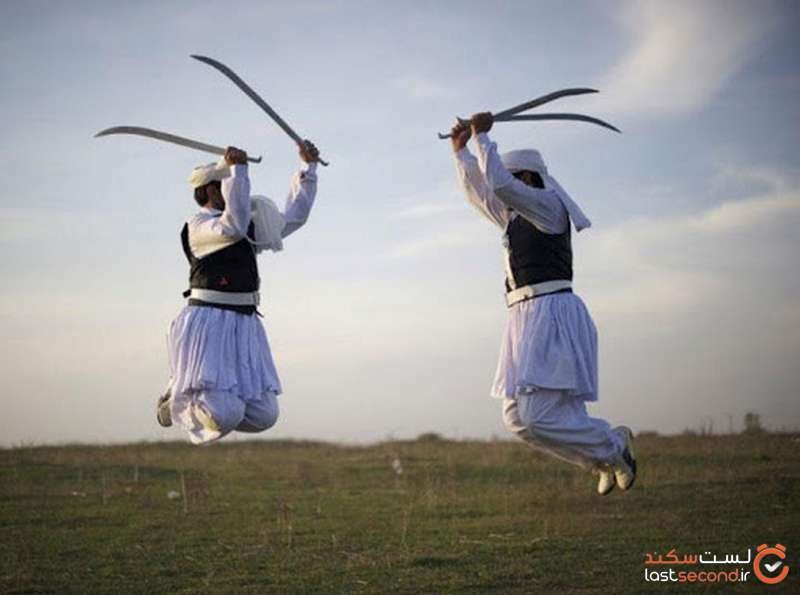
The local costume of Balochistan is one of the most luxurious traditional Iranian clothes, which is called the most expensive local costume of the country, according to some
Baloch women’s clothing
The beautiful and colorful dress of Baloch women is known as one of the main symbols of authentic Iranian clothing with a huge historical support. The cut of this dress is simple; But parts such as the cuffs, the front of the dress and the top of the pants have been embroidered and decorated with rural and native designs. The variety of colors in the clothes of Baloch women is one of the attractive features of their clothing.
Because in most parts of Iran, old Baloch women use dark colors and young women use colorful and cheerful fabrics in their clothing. The presence of pockets in clothes is one of the strangest and most interesting points in the clothing of Baloch women. Pockets are introduced as a symbol of courage and valor of these women. Pajamak, Teko (charqad) and Serig (scarf) are part of the components of Balochi women’s clothing.
The “shirt” of Balochi women is divided into several different types; Tajik shirt, Patchin shirt and double-breasted shirt are among the types of these shirts. These shirts were completely embroidered in the past; But today, the difficulty and elegance of the work on one hand and the high cost of clothes on the other hand have limited Balochi needlework to the collar, pocket and sleeve ends.
“Tajik shirt” consists of a straight cut with two slits on the side, and its height is about one cubit above the knee. The front of the dress is cut below the chest and the hem is decorated with embroidery with black thread (black embroidery). “Pachin shirt” has a short upper body and a skirt with small pleats, which are completed with simple sleeves and cuffs and knee length. “Double-necked shirt” is cut in the back and front of the collar, and for this reason, it is called double-necked. The model of this shirt is similar to the Tajik shirt; But its length is longer (below the knee) and without slits.
“Tonbun” refers to a skirt with a hem that Sistani women used under Tajik shirts instead of pants, and its width reached 10 meters. This skirt was also embroidered with black thread, and some women wore up to three hedging skirts on top of each other.
“Shalwar” or in the local language “Kotane” is usually worn with a patchwork shirt. These pants consist of two conical legs and a low-cut middle leg and a pleated waist, and the edge of the pants is hemmed and decorated with hand or wheel.
“Lechak” or head scarf is usually folded and tied in front of the head. The two sides of the elastic go between the handkerchief and the hair is visible from under it in the form of an umbrella. “Chargad” or cap is also a square white or colored cloth that is worn on the lapel. The “hat” is another part of this cover, which is designed in the form of sweat and decorated with beautiful motifs.
“Veil” is used by some Baloch women to cover their face. This cover is made of white linen fabric and it is traditionally embroidered in the place of the eyes and tied to the back of the head with the help of a strap.
“Chader” is made of cotton and has a square design and is woven by the natives of the region. The tent of Baloch nobles and nobles is made of small squares and made of silk thread. This rectangular checkered cloth is placed on the head from the middle and its height usually reaches the sides of the knee and sometimes lower than that.
Baloch men’s clothing | Traditional clothing of Iran
Men’s Balochi clothing is a white quilted garment that generally includes a long shirt and loose pants. This cover will be completed by wrapping a lang or a long hand around the head. Jamak (shirt), pak (turban), supi cap (sweatshirt), pajamak (loose pants), serinband (belt for pants) and kush (leather shoes) are part of Baloch men’s clothing.
“Jamek” or “Kurte” or “Chartke” is a men’s shirt that is cut and sewn by the hands of Baloch women. The opening of the sleeve of the dress is wide and two square pockets are designed on its sides. This dress is now produced under the influence of the fashion industry and personal taste, sometimes short and sometimes long. The wide-sleeved shirt consists of two pieces of the upper body and the skirt, and the length of the round, long and wide skirt reaches the knee. In the past, this dress was used for celebrations.
Baloch men’s “pajamak” or pants are very pleated and sewn with lapels. In the past, the pants of wealthy people were sewn much wider than usual, and sometimes they needed 35 meters of fabric to produce them.
“Shawl” or “langi” is a rectangular cloth that men throw on their shoulders and use it instead of a towel or janmaz.
“Vest” and “Kaba” are considered as other coverings for men in this region. Kaba looks like clerical robes and its collar is open and closed by several buttons in the front. This cover is usually used in the cold region of Balochistan.
“Katuk” is one of men’s clogs in Balochistan, which is made of wood and has wool straps. “Pak hat”, “lamb hat” and “cotton hat” are also types of hats that are produced in different shapes and materials and used by Baloch men.
The clothes of the inhabitants of the coast of the Persian Gulf
The people of the blue shores of the Persian Gulf have gone to light, thin and comfortable clothes due to living in hot and humid weather. Many ethnic groups such as Lors, Turks, Arabs, Qashqai nomads, Tabrizis and Kurds live in this region of the country. Therefore, the local clothes of the people of this region seem a little different from other parts of the country. A large part of the residents around the Persian Gulf are Arabs, and the nomads of the region are another large group that lives in this area.
The common point of coastal residents of southern Iran, who are also known as Bandari, is their light, cool, thin and loose clothing. In general, there is a kind of structural similarity in the clothes of the people of Bushehr, Bandar Abbas, Qeshm and the surrounding areas, and among them, the most common type of Bandari clothing is known as the local dress of Hormozgan.
Bandar women’s clothing | Traditional clothing of Iran
The clothes of women in the Hormozgan region and the coastal areas of the Persian Gulf are made of thin fabrics and light colors so that the air flows easily through them. Bright blue, purple, pink and green colors are the most used colors in the shirts and pants of these women, and in terms of these happy colors as well as the traditional designs and patterns, their traditional clothing has its own beauty.
The “shirt” of Bandar women can be different according to each city and village and can be produced in two ways: long up to the ankle and short and below or above the knee. These shirts are mostly seen in the form of Kandura, Goon, Ashkam, Nishtha, Astin Farah, Kloosh, Ajmi, Chinese, Ghashad, Arab and Saed Shalali.
Women’s “trousers” are sewn with the same shape and makeup in all areas of the port; But the bottoms of these pants can be different from each other based on local taste. In fact, the slippers of these pants have a lot of variety in terms of stitching, decorations and fabric. The leg of Bandari pants is tight to the knee and wide at the waist and bottom, and the ankle part is closed with a zipper or a button. The material of the pants is often chosen from thick fabrics and bright colors, and based on the type of decorative stitches, it is divided into different types, such as full hem, half hem, hand hem, wheel hem, sequins, fringe, serpache, glabtoni, khos langeh, satin hem, and cotton. They categorize. iran handicrafts
Bandari “Chader” is considered one of the most beautiful traditional tents in the country, whose design, color and type of fabric are very eye-catching. This tent is often available in brown, mustard and bluish gray colors and is usually imported from Arab countries or India and Pakistan. They put on the Bandari tent in two special ways (la nim la and kul zadan). In the first method, the corner of the tent is placed over the shoulder and the other side is left free. In the second method, the curtain is wrapped around the head and its corner is left in the ear area.
“Burqa”, “burqa” or “burqa” is considered a type of hijab, which also has a decorative aspect. This type of cover is more common among women living on the beach in Qeshm, Bandarlange, Jask and Bandar Abbas, and areas such as Rodan, Hajiabad and Bestak use it less.
Port men’s clothing | Traditional clothing of Iran
In the past, the men of the Persian Gulf coast used a long dress that was known as “Kandura” in old Bandar Abbas. This dress was sewn from several types of thin and thick fabric, and men tried to always cover themselves with long clothes. Captains, sailors and fishermen also had two types of shirts for work and parties. The work shirt was long and colored and striped especially in winter, and the party dress was made of white color and silk or thin muslin.
Today, Bandari men’s clothing includes various components such as hats, trousers, handkerchiefs, undershirts, pajamas, coats, shirts, coats, coats, jackets, kenjos, scarves, sovas, giveh, malki, jute, car, kepkap soles and all kinds of shoes. The model will be new. Among the men of Hormozgan province, especially the Arabs of the southern region, these components can be summarized as Dashashe, Khachie, Chafie or Kufie and Aqal.
“Dashdashe” is a white and long dress (up to the tip of the toes) that is available in two types: collared (Iraqi) and collarless (Gulf or Emirati). “Basht” or “Khachiye” is a thin dress made of light wool, sometimes the shoulders are decorated with embroidery and it is worn on the dashashe.
“Chafieh” or “Kufiyeh” is a white, black or red, striped or checkered fabric that is tied on the head (and sometimes on the waist) and plays a protective role against the wind, dirt and sun. “Aqal” is a black ring of woven threads that keeps the headscarf on the head.
Qashqai dress | Traditional clothing of Iran
The local clothes of Fars province are among the most beautiful traditional Iranian clothes and one of the cultural attractions of this province. Nomads of the Qashqai tribe who live in the plains of Fars province; They are a Turkic-speaking people who settled in different regions of Iran during the Seljuk, Timur, and Safavid periods.
They consider happiness and vitality as one of the distinctive features of this noble Iranian people, which is also included in their clothing. The combination of unique designs and happy colors gives a special beauty to Qashqai clothes. A dress that is considered one of the oldest traditional clothes in Iran and its date is attributed to the Achaemenid period.
The beautiful Qashqai dress is one of the oldest traditional clothes in Iran, dating back to the Achaemenid period.
Qashqai women’s clothes | Traditional clothing of Iran
Qashqai women’s clothing is one of the most worn and free clothes available, which, in addition to beautiful appearance, protects their body from cold and heat. This dress is suitable for different seasons of the year and the economic value of the household has been fully respected in it so that everyone can use these happy and colorful clothes according to their budget. Different Qashqai clans are distinguished by the type and color of clothes and headbands; But in general, the clothing of nomadic women includes hats, archalaqs, turbans and slippers, which are inspired by nature and produced in different colors.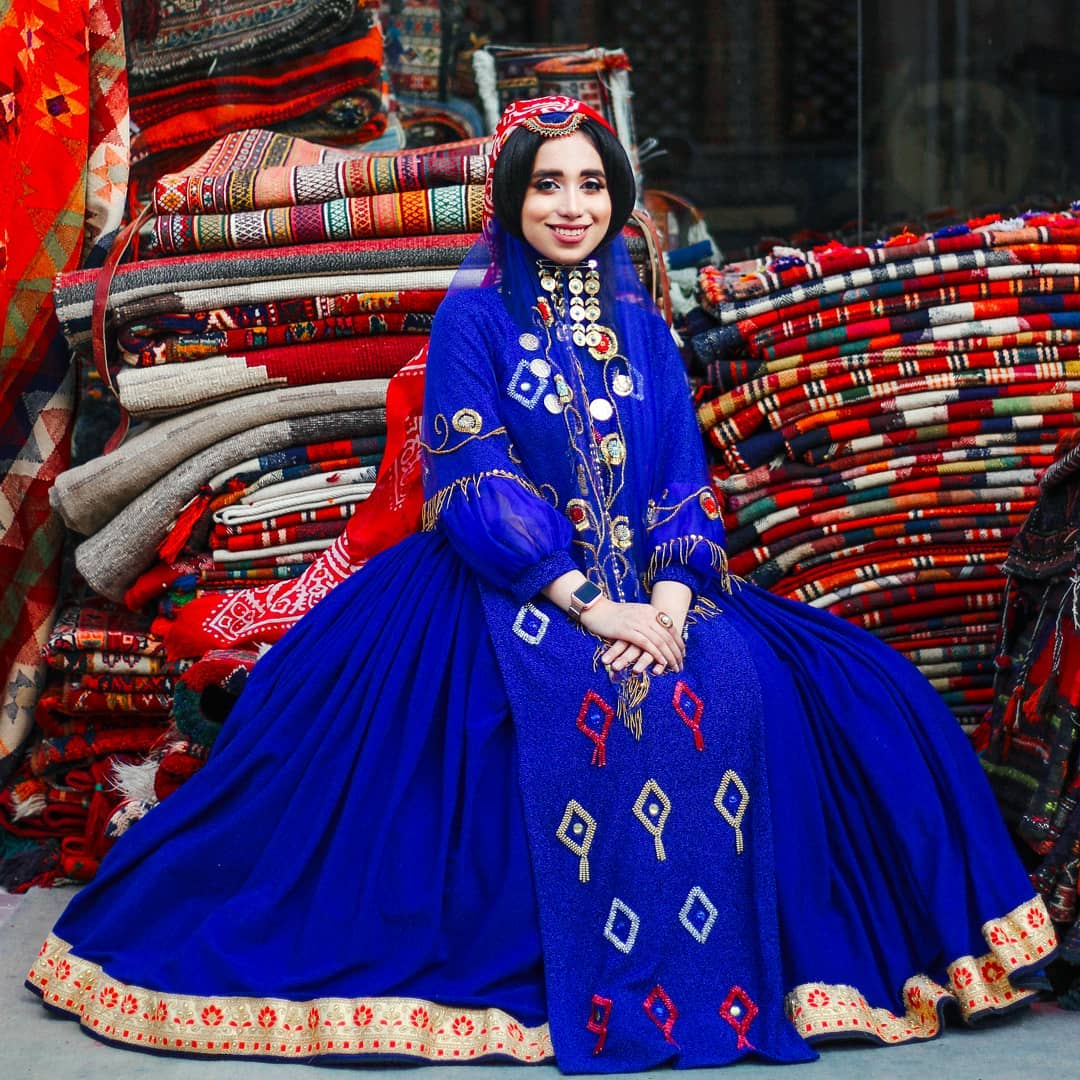
Multi-layered skirt (shalitah, tanban), tunic (qinaq) with slits on both sides, short jacket (archalaq), small hats (kalaqcheh), silk headband (yakhalq, qalaq) and scarf-like net (charqad) are the details of this beautiful local dress. constitutes
“King” or shirt is a kind of long women’s shirt (from shoulder to ankle) that has a slit from the bottom to near the waist. The collar of this dress is completely closed and the length of its sleeves is up to the wrist. The shirt chuck divides the clothes into two parts, the back and the front, and helps nomadic women to easily go about their daily activities. The length of this shirt as well as the shirt defines the different parts of each region.
“Turkey Toomban” is a long skirt with many pleats and made of light fabric. Usually, for more beauty, one or two turbans are worn on top of each other and more fabric is used in its production. The many folds of the Turkish turban are considered a reason for emphasizing more coverage; In such a way that when the wind blows and one side of the skirt gathers, the next folds will sit in its place and the dress will not be lost. Turki Tunban is known as “Tomban Reel” or “Tombon Qari” among Ler-speaking nomads.
“Arkhalaq” is the cover used by women in the cold seasons of the year; But because of its beauty and protection, they use it in most seasons of the year. In addition to being warm, this traditional cover also brings dignity and weight to women. There is a chak under the armpit of the Archalaq, which makes it easy to move the hands, and it is worn over the clothes.
“Chargad” or scarf is a very delicate and thin cloth with special designs that nomadic women cover their whole head (except face) with its help. Some women decorate this beautiful scarf with beads and tapestry, and they also embroider its edges.
“Yagluq”, a headband or headscarf, is an expensive fabric made of silk or silk that the women of Persian tribes wear on their foreheads. This handkerchief is tied on the chargad and tied behind the head to protect them from the cold and wind. The front part of Yagluq is connected to the Charqad on top of the forehead with a pin or a gold flower.
Qashqai men’s clothes | Traditional clothing of Iran
In the 19th century, the common men of the Qashqai tribe appeared in wide-leg trousers (tanban), collarless shirts (qinaq), long robes (arkhalaq), which were secured with a shawl, and a warm felt cap (kapnek) and a round black felt hat (barak). Guns, knives, daggers, swords and clubs were also an important part of their decoration. Today, this local dress consists of hats, shirts, archalaqs, waist shawls, turbans and kepnaks.
Like women’s clothes, the “men’s arkhalaq” is long and wide and sewn with two slits on the sides so that men do not have any problems with the clothes when walking and running. This cover is the main part of Qashqai men’s clothes, many of them wear it without a shawl.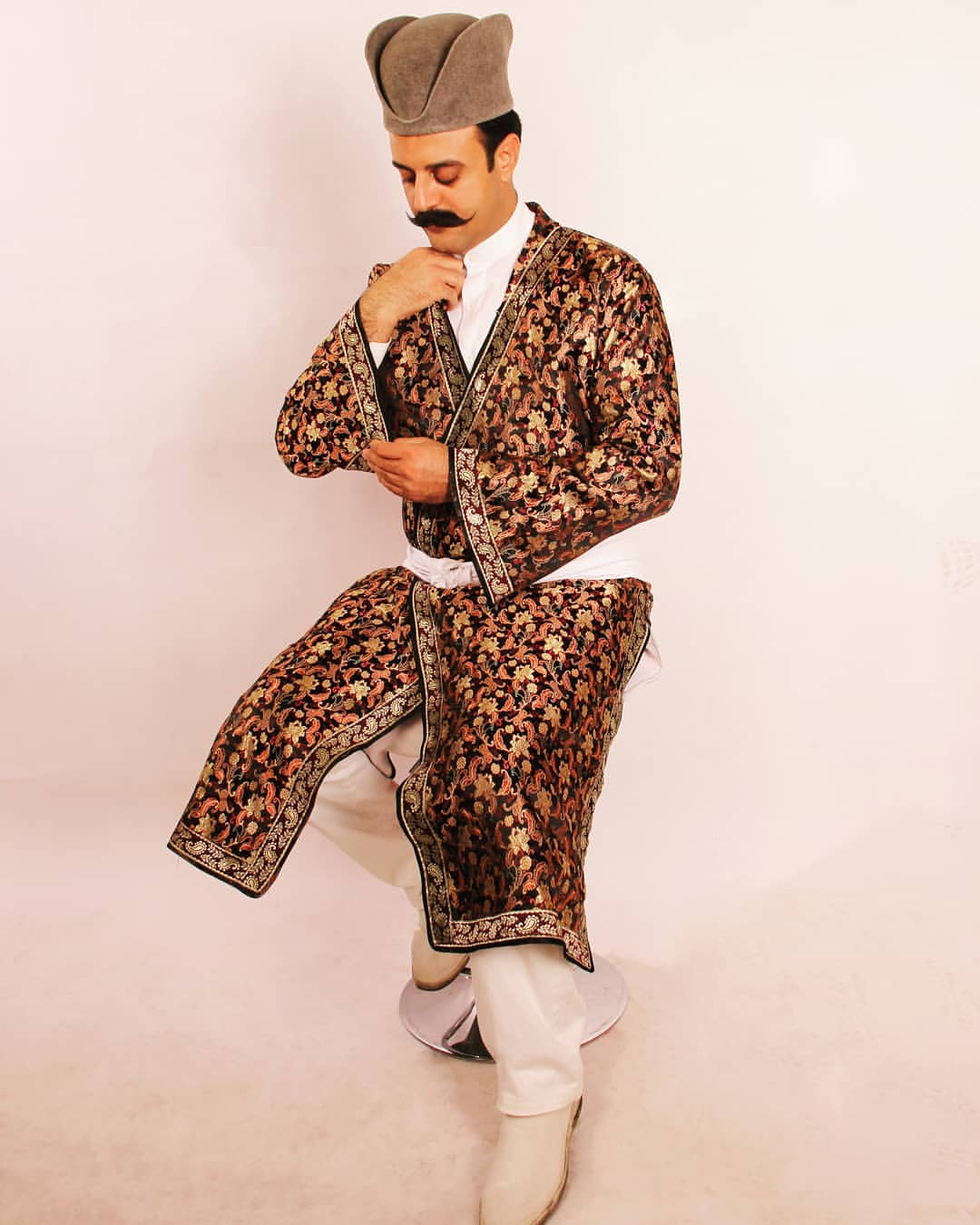
“Waist Shawl” is a thick white or brown cloth that reaches five to six meters in length. This shawl is often tied on the back of the head and in addition to its beauty, it helps to keep the vertebrae of the back healthy during high mobility or lifting heavy objects. Some men also use shawls as pockets and to store money, clothes, combs, etc.
“Chacha” is a special cream-colored weave that is usually worn on shawls and shawls for the purpose of clothing. “Choqa” is also called the thin robe of Qashqai men, which is usually used in war, hunting or celebrations.
“Double-cornered hat” is an integral part of Qashqai men’s clothing, which is often produced in pea and gray colors, and men must always wear it. The hat has two ears and is made of fine and delicate felt so that its feathers do not disturb the hair. Despite this elegance, the Qashqai felt hat is heavier than other existing hats so that it does not fall off easily due to wind and storm. This hat will protect the head from the sun, and when the sun shines, the corner can be used as a canopy.
Local clothes of North and East of Iran
Gilki clothes | Traditional clothing of Iran
The local dress of the people of Gilan is considered to be one of the most beautiful and happiest types of Iranian local dress, which has a pleasant fit with their living environment. This dress has been registered in Iran’s spiritual heritage list and was chosen as the happiest dress in the world at the New York Fashion Festival. The local dress of Gilak women is divided into three types: Ghasemabadi, Talashi and Rasam, which are the clothes of the people of the east, west and center of Gilan, respectively.
Qasimabadi clothes are considered to be one of the oldest and most authentic clothes of Iran and the Middle East. Sarmusi dress is also seen more in Masuleh city and is a relic of the Qajar era. The fabric of clothes is chosen differently in different regions, and people near the foothills of Gilan use thicker fabrics in their clothes. For example, the people of Dillman wear velvet clothes and those who live in Jalga wear silk clothes.
Gilki’s beautiful dress was recognized as the happiest dress in the world at the New York local dress festival in 2016
Gilan women’s clothes | Traditional clothing of Iran
Gilak women’s clothes shine like a rainbow of different colors. This dress consists of different parts such as elastic, scarf, bandand, shirt, vest, coat, skirt, pants and chadorshab. Colorful skirts decorated with happy colored stripes, a shirt made of satin in different colors and an open front vest in black and decorated with coins and ribbons, show the overall appearance of these women.
“Pirahan” or upper garment of Gilan women has different names in different dialects of this province; For example, in the Talshi dialect, it is called “Shasi” and in the East and Talish Jalga, it is called “Pirhan” or “Jameh”. Both sides of this shirt have slits and the front of the shirt is also decorated with embroidery and wheel embroidery with colored threads.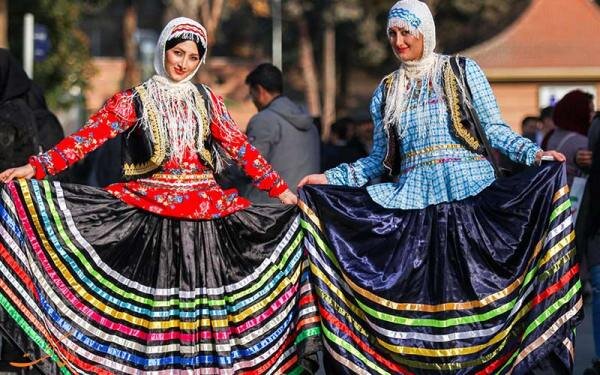
“Shilite” is a short and full Chinese skirt, which is also known as short toman (tanban) or “round toman”. The pleated long skirt used in the center and east of Gilan is called “Draz Toman” and in the Talshi language and west of Gilan it is called “Shelar”. Lucky girls usually wear white shalitas and women wear flowered shalitas in their clothing.
“Vest” also has different names in Gilan; In the western region of Gilan, it is called “Jalakhta” or “Niftneh”, in the east of Gilan it is called “Jargadah” or “Jarzkeh”, and in the plains of Gilan, it is called “Jalkhte”, “Jaltaqah”, “Jalkhta” and “Jalkhdeh”. This cover is designed with an open front, a seven-button collar, and three pockets on the sides, decorated with sequins, and with a buckle on the back, it can be tightened and loosened.
“Lechak” and “handkerchief” are the scarves and headbands of Gilak women. They use two headbands in their covering; They tie the lace below and the handkerchief on it.
Al-Jaqba, which is woven from velvet fabric or chadorshab, forms the cover of women in the eastern mountains and Qasimabad. Some villagers tie a prayer tent cloth around their waist; But in the eastern part of Gilan, they use Chadorshab or “Charshu” in the local dialect with a red background color for this purpose.
Gilan men’s clothes | Traditional clothing of Iran
The components of Gilan men’s local clothing are shirts, vests, pants, waist shawls, and felt hats.
The Gilak men’s “hat” has changed over time, from the black mahout hat to the Pahlavi hat and the European hat (shapur). Traditional felt hat, talshi cracked hat and leather hat made of lamb skin are examples of traditional men’s hats of this region.
“Chokheh” or “Chokha” is a short woolen coat woven from goat wool. This short coat is used in cold days, and for the night, it is replaced by a long coat called “shola”. They usually wear a light colored cotton shirt under the coat.
“Shelar” is a simple black woolen pant with a tight bottom. These tight slippers are designed for older men in the form of a tube and for young people in the form of a button. Churodari pants, Qadak, Tang Toman and Dij are among the types of local Gilak men’s pants.
Gilek men wear “vest”, “jalkateh” or “jalkadah” in all seasons of the year; with the difference that the vest for the autumn and winter seasons is made of shawl and the vest for the spring and summer seasons is considered to be made of thinner fabrics.
“Bashlaq” is a long covering for Gilak shepherds, which is obtained by cutting woven fabric (shawl wool). “Kolagir” is another shepherd’s dress, which is made of felt and without sleeves, and they wear it during the day.
Mazni’s dress
Many different ethnic groups of the country live in Mazandaran province and each of them has its own clothing. Freshness and variety of colors derived from nature, in Mazandaran, like other provinces of the country, has become the main feature of clothing, especially for women. Caps, tunics, and sandals make up the overall clothing of the people of this region from the north of the country, each of which is produced with specific details.
Mazandaran women’s clothing
The local dress of Mazni women is a fully worn, colorful and eye-catching dress. This dress includes components such as chador, chagchur, half leg, veil, niqab, charqad, shaliteh and turban. a cover that is close to the stage of oblivion; But they still sometimes go to it in ceremonies or celebrations and special rituals.
“Sheliteh”, “Cherkhi Shalwar” or “Tambon Qambli” is a short pleated skirt made of silk fabric and one-colored fine linens, which are embroidered around the bottom edge with a black band.
“Tanban Tange” or “Peshmbal” is a type of pants with a simple pattern and black color, usually made of canvas. The waist of these pants is tied (instead of elastic) with a long linen band and worn under the shirt.
“Leggings” are a type of tight pants that girls and young women usually wear under their shirts. These pants are made of silk or velvet and can be seen in green, white or red colors.
“Jumeh” is a shirt and a skirt from the shoulder to below the knee, which is usually made of linen or chit.
A “bodice” or “vest” is similar to men’s vests with a heft or round collar. The vest has several buttons and jade fabric is used in the front and lining is used in the back. Another vest made of red or yellow velvet and decorated with coins and old money is also called “Simposh”.
“Kalijeh” is a kind of long coat for the winter season, which has long sleeves and is sewn from colored and embroidered velvet and decorated with Iraqi and Reza Shahi coins. Another type, which has elbow-length sleeves, is called “chekban”.
“Chader Shu” or Chadorshab, is a square shawl that Mazeni women tie around their waist in a triangular shape. With this veil, the bride’s head and face are also covered on the wedding night. Ordinary people use skew material (third grade silk) and nobles use silk to sew their tents.
“Chargad” is a three-eared scarf made of wale, muslin, chit or silk, which is seen in bright and floral colors. There is also a chariot with bright colors and silver decorations called “Sarchengak” which is used in ceremonies and celebrations.
“Mandel” is called a linen headdress, which is often used for daily work and agricultural time, and is tied in a triangular shape on a scarf. “Sarakouch” is also a type of cotton women’s hat with a pleated edge, which is used to cover braided hair.
Mazni women’s clogs are also named under titles such as “Kush”, “Galash”, “Charuq” and “Patoue”.
Men’s clothes of Mazandaran | Traditional clothing of Iran
Mazni men’s clothing has many variations according to the type of agricultural or animal husbandry work and the type of weather in hot or cold seasons. These local clothes, in addition to being practical, with the design and color scheme for men, show a beautiful effect of the art and culture of the people of Mazandaran.
“Jumeh” is called Mazni’s men’s shirt, the material of which will vary according to the season. The material of this dress is made of canvas, chit or chalwar, and in special cases, silk.
“Taman” or “Pashmbal” is a pair of black or blue pants made of canvas, which is replaced by a chuqa in winter. The pattern of these pants is considered simple and long, and the waist is tied with a belt instead of elastic.
“Haftan” is a bodysuit made of black or blue wool, which is designed with buttons and a turtleneck, and is worn over clothes when it is cold.
“Chokht”, “Qaba” or “Kolek” is a simple and dark coat made of wool, and in fact, it is considered winter clothing; But “Alijeh” or “Sardari” is designed longer than the normal coat and close to the knee, and is often used by grooms and noble families.
“Lebade” is a long garment made of canvas or faston, which is tied with a shawl called “waist shawl” made of wool or silk. “Shula”, “Kordak”, “Bushluq” and “Pestek” are other Mazni men’s clothes that are usually used by shepherds.
“Felt hat”, “Gushi hat”, “skin hat” and “night hat” are among the various hats for men and “jerb”, “kush”, “shikhi kush” and “charuq” are also types of men’s caps in Mazandaran and the northern regions. Iran is considered
Turkmen clothes
The dress of Turkmen people of the Sahara is one of the most beautiful types of Iranian local dress, in which the presence of red color is the first word. The main material of this people’s traditional clothing is animal skin, linen, cotton and silk; But the authentic Turkmen clothes, both men’s and women’s, are made only from silk.
Silk thread is dyed with natural dyes such as pomegranate seed or peel, boia, indigo and other dye-producing desert plants and they sew their local clothes with it. In addition to the Turkmens of Golestan province, some of this tribe also live in North Khorasan, where the same shape and design of clothes can be seen in both groups.
Turkmen women’s clothing
Turkmen women’s clothes are designed according to the age of people and the use of different clothes. In fact, Turkmen women wear different clothes for every occasion, including holidays and celebrations, going out of the house and shopping at the market, doing agricultural work and baking bread.
“Qirmiz Kunik” is a Turkmen women’s silk shirt, which is known by this name because of its red color. This beautiful dress has needlework on the collar and sleeve ends, and a top named “chabit” is also worn on it. The three parts of “Ying” meaning sleeve, “Yan” meaning side and “Ashari” meaning skirt make up the different parts of the Turkmen shirt.
“Ghoshaq” are silk belts of women that are wrapped around the waist to collect the clothes and not disturb them during work and activities, or in other words, the clothes are not on their hands and feet.
“Balaq” or “Balaq” is the local name for the white trousers of the women of this tribe, which are sewn almost loosely and narrow at the ankle. The upper part of the pants is made of white linen fabric and the bottom part of the pants is decorated with needlework.
“Chirpi” is a type of top in the form of sleeveless capes, which is produced in green and red colors and beautiful designs. This cover is often used in ceremonies and has different colors and embroidery according to the age of the women.
“Chargad” is the big scarf that Turkmen women cover their head and hair with. The material of this scarf was pure silk in the past; But silk cloth has been replaced today with floral chit with long and luxurious roots. Yalig, Qingach and Chashu are different types of Turkmen women’s headscarves. Married women, instead of “buruk” or girl’s hat, usually use a forehead band in their cover, which has different names in different Turkmen clans.
“Yashmaq” or “Yaleq” is a thin rectangular Turkmen scarf with a needlework border, and Turkmen women cover their chin with it according to the custom of their people. “Aposh” is also called shoes with triangular heels, which are produced from raw leather.
Turkmen men’s clothing
Turkmen men’s clothes consist of different components and include different types of tunics, pants, hats and shoes.
“Don” is considered the main dress of Turkmen men, which is a long robe (below the knee) with needle embroidery and made of silk, and it is produced in two types. “Qirmiz Don” is sewn from completely red silk and “Qarma Don” is made from yellowish silk with a combination of colorful threads. Other Turkmen men’s tops are named “Chakman”, “Ichmak” and “Qaba”.
“Quink” is a simple shirt made of cotton material with a round collar and no buttons, the collar of which is decorated with detailed needlework. The tops of the long sleeves of this shirt are also embroidered; But men over 50 usually wear plain white shirts without patterns.
“Hat” is considered to be the main covering of Turkmen men, which has different types and it is divided into two general categories, “Telpak” and “Boruk”. All kinds of telpek are made from lamb skin, and burok is a kind of embroidered sweat. “Chakemeh”, “Chariq”, “Dulag” and “Chapek” are also considered to be types of Turkmen men’s shoes.
Khorasani dress
Khorasani dress is several thousand years old and despite the historical developments, fortunately it is still used among some people of this region. This type of local clothing has special characteristics and is divided into several categories according to the different northern, central and southern regions of Khorasan and the settlement or migration of many ethnicities such as Kermanj Kurds, Turkmen, Baloch and Arabs. However, the whole Khorasani dress is very similar to the clothes of the Afghan people.
Khorasan women’s clothes
Khorasan women’s clothes are very diverse and often different according to different clans; Because various peoples and tribes live in this vast province and each of them displays their own culture in clothing.
The Kurdish women of North Khorasan, who are known as Kermanj Kurds, have eight pieces of clothing, and many decorations can be seen on their clothes, head, neck, and hands. For example, they wear different headbands and decorate their clothes with beads on the headband or the edges of the pockets.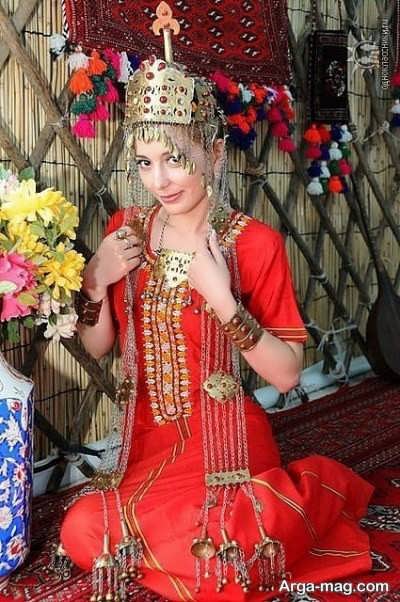
“Grass” is a simple shirt decorated with special stripes, a vest decorated with old coins, “Shilvar” or a short velvet skirt and hedging, and a shoe called “Charaq” accompanied by a large woolen scarf, constitutes the whole outfit of a Khorasani Kurdish woman; But today, the dress of Khorasan Kurdish women is summarized in a shirt, the skirt of which is very similar to a shilwar.
In the past, South Khorasan women used headscarves such as “desmal” or handkerchief, “chargat” or charqad, “eraghchi” or argachin, “kadifah” and “gish” or rectangular headscarves. Shirts, patches, coats, waistcoats, waist shawls, skirts, shawls and shawls were also their clothing.
Khorasan men’s clothes
The men of Khorasan, like the women of this region, dress according to their tribe and tribe; But perhaps it is possible to consider “handkerchief” or “turban” as a distinct feature of Khorasani men’s clothing. The Kurdish men of Kermanj (North Khorasan) appear a little different from the three Kurdish regions of Kurdistan, Kermanshah and West Azarbaijan. These men’s shirts are red and often made of satin, and they have embroidered ribbons around the collar and sleeves. Kermanji men’s simple and black pants are placed inside a hand-knitted sock at the wrist. Sometimes they wear a vest over a shirt, and especially grooms use a black vest decorated with coin embroidery.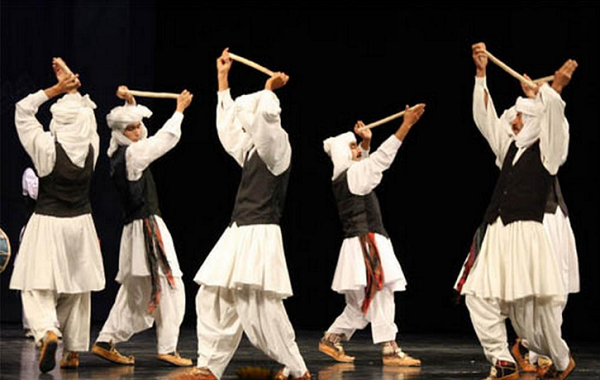
Men in South Khorasan usually wear different types of headgear, such as sweat hats, pill hats, felt hats, or night hats. At night, they also tie their hats with a white or black shawl called “Mandil”. They wear a white and gray linen shirt that is collarless and has two or three buttons only at the top.
“Qamis” is considered another piece of clothing, which is also known as Afghan clothing, and in fact, it is a long shirt below the knee with two slits on the side. They wear linen pants with wide legs and a black vest completes their outfit. This dress is very similar to Khorasan Razavi men’s dress and only minor differences can be seen in it.

